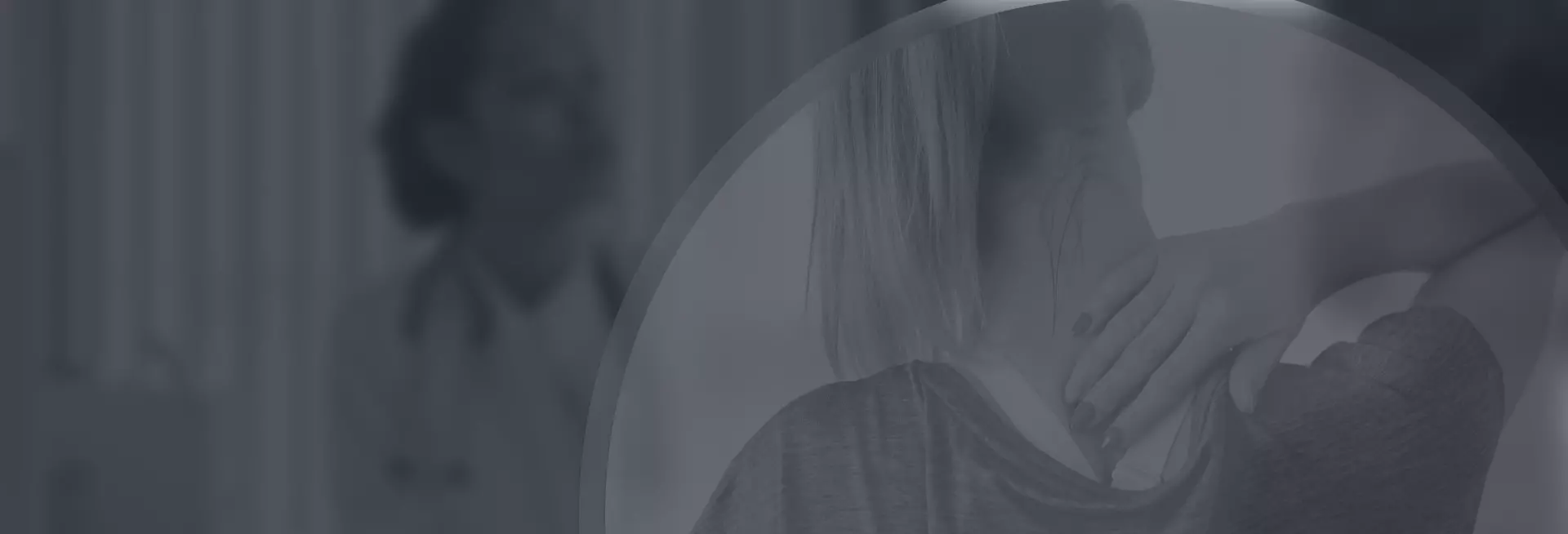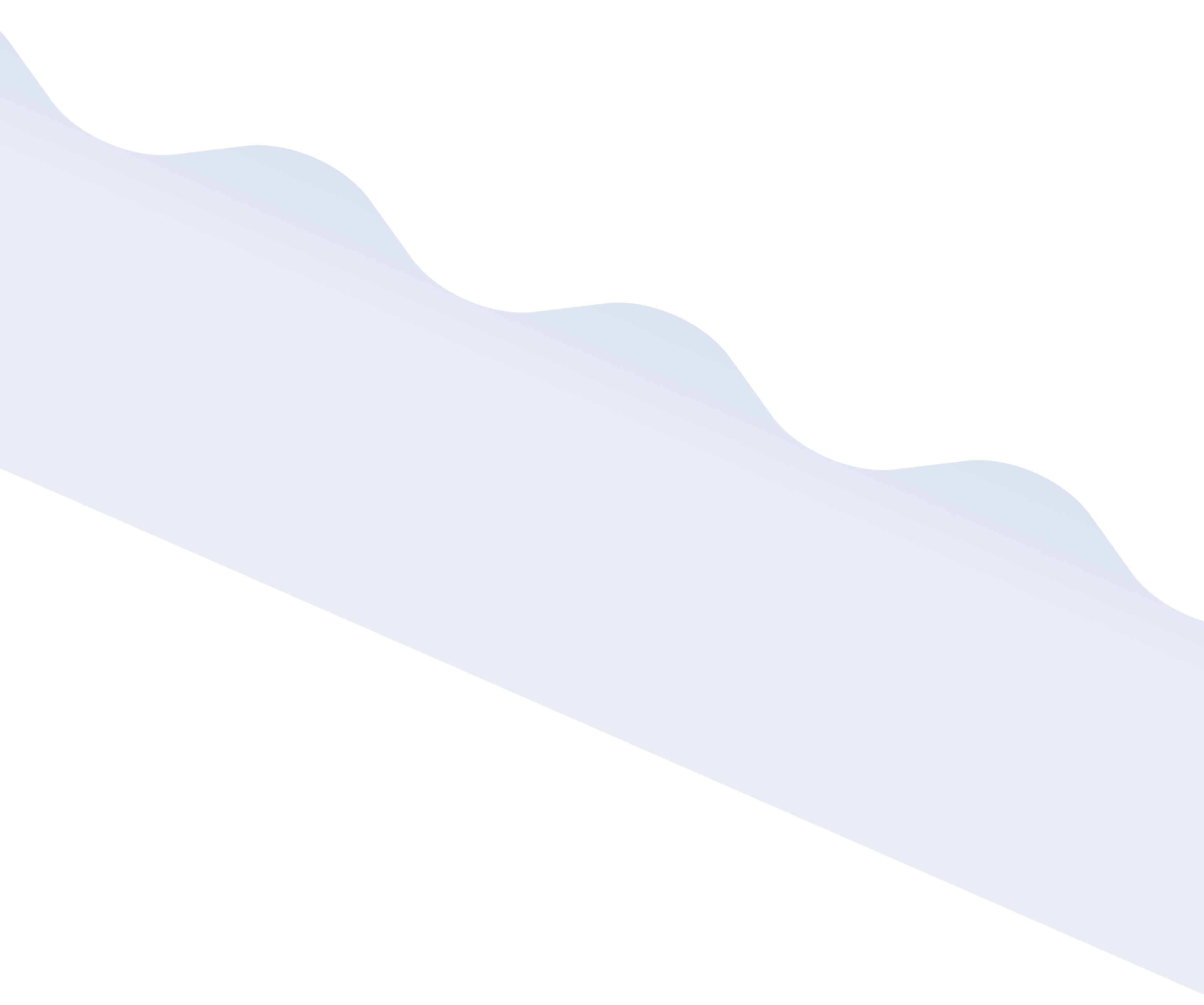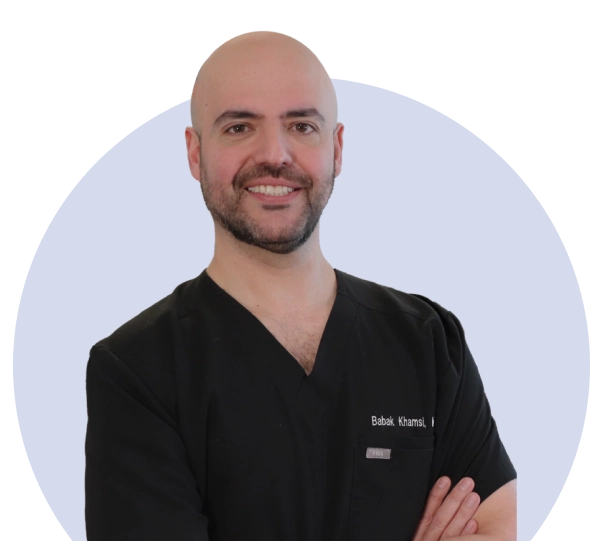Back Pain
If you have back pain, Dr. Khamsi can treat it.

If you have back pain, Dr. Khamsi can treat it.


Back pain can make everyday tasks seem impossible. Simple things like walking may be difficult and painful. Knowing what’s causing your back pain and when to turn to an expert is essential.
Some symptoms associated with back pain include:
Posture problems
Stiffness
Sciatica
Mobility issues
Muscle spasms
Difficulty standing straight
Leg weakness
Loss of bladder or bowel control
You may experience acute back pain, which occurs suddenly and can last a few days, or chronic back pain, which comes on quickly or slowly and lasts for more than 12 weeks.
Mechanical and structural issues can lead to back pain — for example, a muscle strain or injury. Actions that can strain muscles and spinal ligaments in your back include improper lifting or sudden, awkward movements.
Bulging or herniated discs (slipped discs) and ruptured discs can also cause lumbar pain. Discs work like cushions between your vertebrae, absorbing shocks and giving you some mobility. If a disc bulges or ruptures, it could compress the nearby nerves, potentially leading to irritation and pain.
If you have spinal stenosis, which is the narrowing of the spinal canal, the nerves can be pinched which in return can cause back pain, leg pain, pain shooting down the legs, and difficulty walking.
Degenerative disc disease is a potential culprit as well. With age, the normal wear and tear of the discs can lead to narrowing of the cushion between the bones, and in advanced stages, bones rubbing together, causing back pain.
A type of arthritis that specifically targets the spine is ankylosing spondylitis. This fairly rare condition can cause some of the bones in the spine to fuse, resulting in a hunched posture and a decrease in range of motion and back pain.
Diseases like scoliosis, osteoporosis, and tumors can all affect your spine. Scoliosis is the abnormal sideways curve of the spine, while osteoporosis is a disease that is caused by poor density of the bone (most often seen in post-menopausal women) and It can lead to fractures.
Kidney stones can cause mid-back pain, as can pregnancy and fibromyalgia. These conditions should be considered and ruled out when evaluating someone with back pain.
In addition, there are mental health concerns that may lead to the development of back pain. Depression and anxiety, as well as stress, can affect the body in many ways, including causing neck and back pain.
The chances of developing lumbar pain increase with age. Other risk factors include:
Weight
Posture
Sedentary lifestyle
Weak abdominal muscles
Smoking
Excessive alcohol consumption
Between the vertebrae of your spine are soft discs. They let your spine twist and bend. They absorb shocks. But if damaged, the disc's soft center can push through the disc wall. That's a herniated disc. This bulge presses against nerves in your spine.

The first line of treatment for pain is conservative management including physical therapy and anti-inflammatory medication. In some cases, depending on MRI findings as well as each individual’s specific symptoms, surgical intervention may be helpful. One of the most common surgeries for low back conditions offered by Dr. Khamsi is lumbar laminectomy with or without fusion. Laminectomy aims to reduce or relieve the pressure on the spinal cord and nerves by making the spinal canal larger. Following that procedure, in certain cases, Dr. Khamsi can then add spinal stability with fusion which normally requires insertion of screws, rods and spacers.
Dr. Khamsi also offers lumbar microdiscectomy. Lumbar discectomy may be helpful in patients with large disc herniation causing pinching of the nerves and presenting with shooting pain down the leg. This is a condition normally seen in younger patients and often after heavy lifting. The surgery involves making a small incision in the mid lower back, then using the microscope, removing the herniated (bulging) portion of the disc and making sure the nerve is completely free. This is normally an outpatient procedure, meaning the majority of patients go home the same day.


Monday - Friday 8:00am - 5:00pm
Se Habla Español